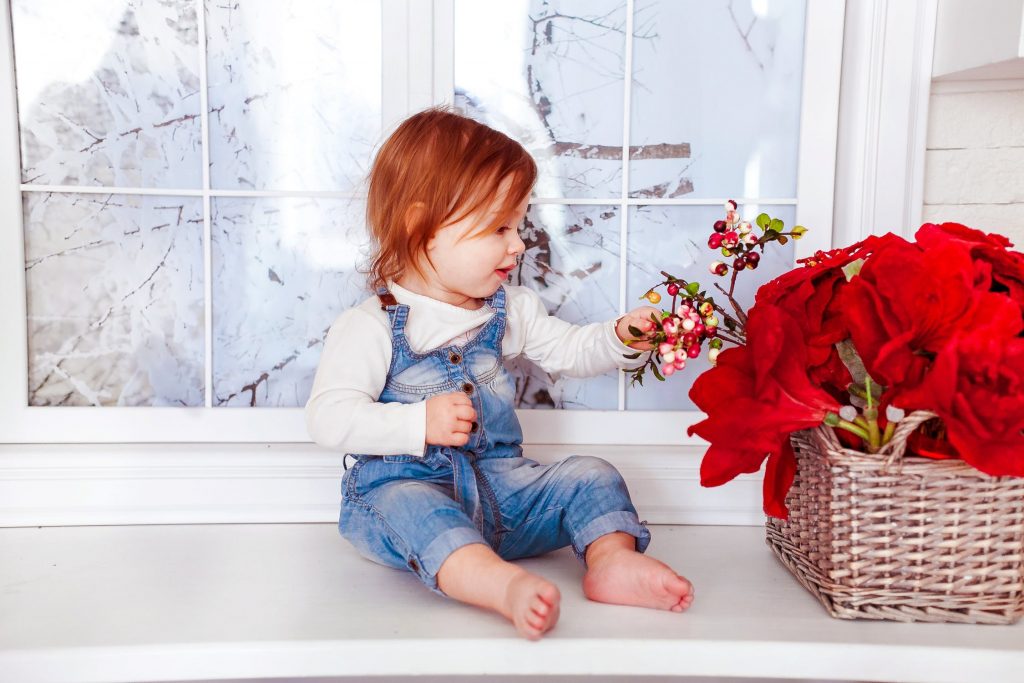
Having houseplants and growing herbs indoors is a great way to improve indoor air quality and add a decorative touch. However, some plants can be dangerous for curious children who are exploring their surroundings, so these should either not be in the home or kept high up out of reach. Herbs can also be used for babies and toddlers, but it’s important to know what’s safe and what to avoid.
Houseplants to avoid
When it comes to childproofing around the home you probably think about adding baby gates to stairs and making the kitchen safe. However, there are several common household plants that can be harmful to inquisitive little ones. Peace lilies are one of the most common flowering houseplants as they’re low maintenance, but if they’re consumed they are toxic to both humans and pets. They’re safe for your toddlers to touch, but keep them out of reach to avoid accidental consumption. Caladium, also known as Elephant Ear, has velvety leaves and comes in various colors, making it tempting to play with. If eaten it can cause swelling, eye pain, diarrhea, and vomiting. Other problematic and poisonous plants include sago palm, devil’s ivy, and poinsettia.
Herbs to have on hand
Herbs have been used for centuries as medicine for various ailments and many still have a place now. Studies have found that chamomile is a mild sedative and is safe for children of all ages, so it can help with anxiety and sleep problems. Some children may be allergic to chamomile, but they’ll usually be allergic to ragweed and similar plants too. Catnip can be used to treat mild fevers in children, as well as upper respiratory tract infections, colic, headaches, nervousness, sleep disorders, and indigestion. However, catnip has never been studied in humans but it seems serious side effects are very rare. Licorice root is another powerful herb that can loosen congestion in the lungs and speed the healing of stomach ulcers. It’s believed to be completely safe but children should have no more than 4-5 grams a day for up to 6 weeks.
Herbs to avoid
There are lots of herbs that are perfectly safe for adults that should never be given to growing children. Uva ursi is often used as a diuretic and support for kidneys. It shouldn’t be given to children as their kidneys are still growing and won’t be able to handle it. Cascara sagrada is used for short-term relief from constipation and, as a result, can cause a loss of electrolytes, so it’s best to avoid it. Both the leaves and berries of mistletoe can be lethal. While mistletoe can be beneficial it should only be used with proper guidance. Similarly, poke root, often used for skin conditions, should be used with guidance only as it’s extremely potent and can be fatal in large doses.
Herbs and plants can be a great way to improve indoor air quality while adding a decorative touch. Always check if your plants are safe for children, if not move them out of reach, and only use herbs that are known to be safe for children.
